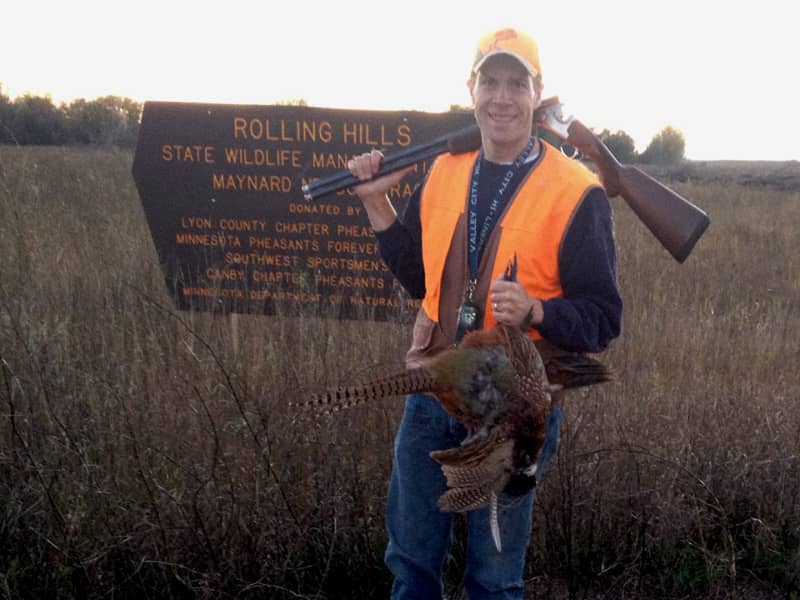
Early Connection. The author on an early hunt after making his switch to the 20 gauge that has been with him for the last decade in the field. Simonson Photo.
By Nick Simonson
For an uplander, there’s nothing more reassuring than a trusted shotgun.
For me, it remains a super light 20 gauge that shoulders easily, swings smoothly, and more often than not, connects with my target.
The familiar crook between trigger guard and checkered wood grip where my hand tenses up as a bird rises and the smooth section which cradles my cheek to the stock on the mount feels as natural as my face hitting the pillow after a long day. Familiarity with a firearm coming from time on the range and many seasons afield helps build a connection between hunter and scattergun that makes moments after the flush more successful and builds a legacy of memories worth recalling and sharing.
Upon first picking up my go-to gun, I felt as if I was holding air in my hands. The over-under was light and easy to handle, swung across the counter of the gunshop with ease, and instantly transported me to the grouse woods of the northland. I marveled at the imaginary scene playing out before my eyes and dreamt of walking for hours on end without noticing the weight of the gun, taking the occasional shot at the ruffies that would thunder in front of me every mile or two. It was certainly a change from the weight of the pump-action model I had previously employed, but I wondered if it would be as effective for pheasants, as it would be on lightening my load on nature walks through the woods.
That summer, I took the little scattergun to the range and with a case or two of trap loads began to get the feel for the tiny barrels. As the broken targets increased with each round, I began to feel that not only would the gun be an effective option for pheasants, but just about any other upland bird I’d pursue. In that first autumn, I’d have a chance on family lands out west and public lands near home to test it out, opting for high end hunting shells to offset the idea that the small gun would be overwhelmed by the bigger birds likely to break cover on opening day.
You could imagine my surprise when the heavy load rang out over the hillside at the first flushing rooster of the season.
In comparison to the off-season’s trap loads, the three-inch yellow shells were a slap on the donkey’s butt, and the little mule in my hands kicked so hard I thought I had broken my face. It was a quick lesson regarding patterning and testing out a new shell before the season began, but as the bird toppled into the grass and my lab made the retrieve, I was able to rub the redness out of my cheek and laugh off the pain from the more powerful load and its ability to turn the little gun into the Incredible Hulk’s green fist with a click of the trigger. From that point on, our bond became just as strong as the wallop the 20 gauge paid out in the field.
For more than a decade now, and over two dogs, we’ve covered fields and forests from Lake Superior to the South Dakota line in search of rooster pheasants, ruffed and sharptailed grouse, and the occasional Hungarian Partridge. With a quick twist of the chokes, we can go from the up-close logging trail action of the north woods to the wide-open prairie and find success. At times, the little 20 gauge feels like an extension of my arm, and in those moments where I take a new shotgun to the range or the field to try out, the comparisons (and shortfalls) begin within a few footsteps from the truck door slamming shut. Much like my first dog, my chosen over-under will remain the measuring stick by which all other shotguns will be judged.
It’s likely that every hunter has a go-to gun, one that just felt right above all others upon first inspection, has been there for the most memorable hunts, and has just made things in the field seem effortless.
Whether it was the first one given to them by a grandparent, parent, uncle or cousin, or one that was picked up on a whim, the memories made and that just right feeling persist, connecting them to their quarry and passion each autumn…in our outdoors.
